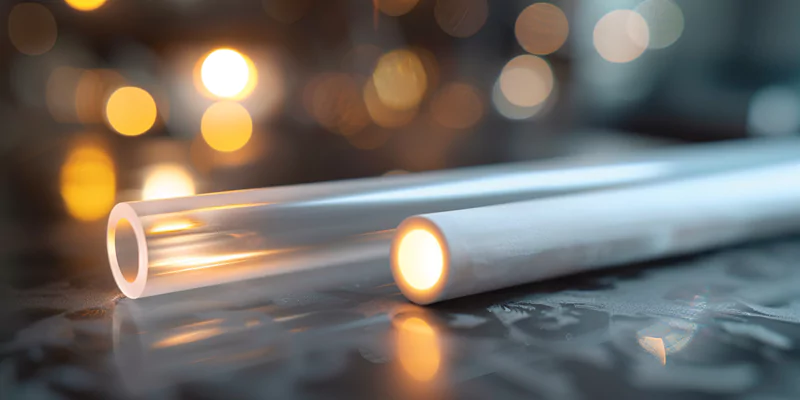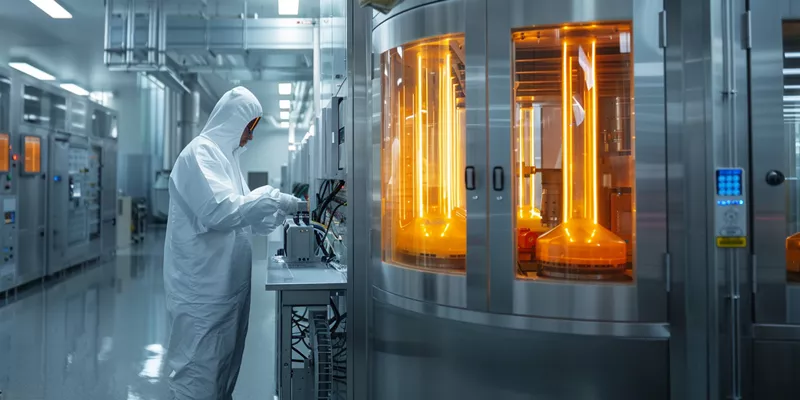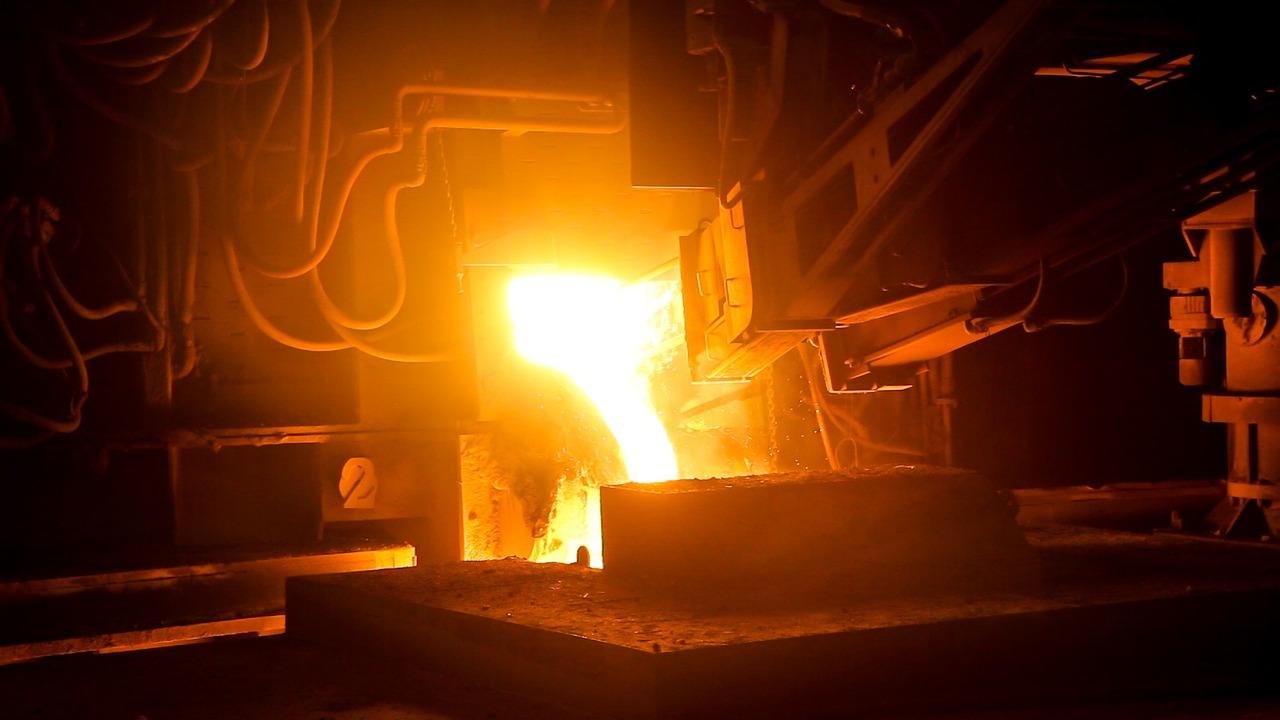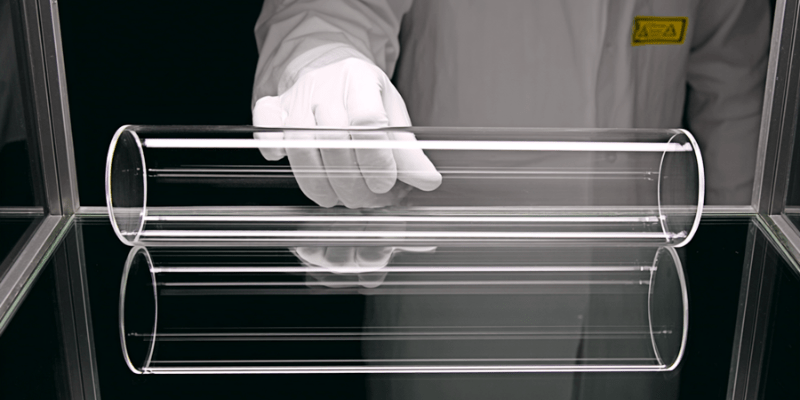Selecting the right furnace tube material is crucial for engineers and process managers aiming for reliability and efficiency in high-temperature environments.
Quartz and alumina furnace tubes each offer unique advantages, but their performance under thermal cycling, chemical exposure, and mechanical stress can differ dramatically. Understanding these differences is essential for making an informed, cost-effective decision.

This guide provides a structured comparison, application-specific insights, and a practical decision framework to help you choose the optimal furnace tube for your process in 2025.
Introduction to Quartz Furnace Tubes and Alumina Furnace Tubes: Basics and Importance
Quartz furnace tubes are made from high-purity fused silica, known for their exceptional thermal shock resistance and chemical inertness. Alumina tubes, composed of aluminum oxide ceramics, offer superior mechanical strength and stability in oxidizing atmospheres.
Both materials are widely used in semiconductor, laboratory, and industrial furnaces. Their selection impacts process yield, maintenance frequency, and long-term equipment costs.
Understanding the fundamental properties and roles of each tube type is the first step in optimizing your high-temperature process.
Key Properties and Advantages of Quartz Furnace Tubes vs. Alumina Furnace Tubes
Quartz and alumina tubes differ in several critical performance metrics. Quartz furnace tubeexcels in rapid thermal cycling and chemical purity, while alumina furnace tube stands out for mechanical durability and resistance to certain aggressive environments.
| Property | Quartz Furnace Tube | Alumina Furnace Tube |
|---|---|---|
| Max Continuous Temp (°C) | 1,050–1,200 | 1,600–1,700 |
| Thermal Shock Resistance | Up to 1000°C/min | Up to 500°C/min |
| Chemical Purity (SiO₂/Al₂O₃) | ≥99.995% SiO₂ | ≥99.7% Al₂O₃ |
| Mechanical Strength | Moderate | High |
| UV/IR Transmission | Excellent | Opaque |
| Typical Failure Mode | Fracture (rare, high ΔT) | Crack (thermal shock) |
Quartz tubes are ideal for processes requiring frequent heating and cooling, such as rapid thermal annealing or CVD1. Alumina tubes are preferred in applications with high mechanical loads or strongly oxidizing conditions.
A common misconception is that all furnace tubes can withstand similar thermal shocks. In practice, quartz tubes tolerate up to 1000°C/min temperature changes, while alumina tubes may crack at rates above 500°C/min. For high-frequency thermal cycling, always choose quartz and request ASTM E2282 thermal shock test data from your supplier.
Application-Specific Performance: When Quartz or Alumina Excels
The choice between quartz and alumina depends on the specific demands of your process environment.
Quartz tubes excel in semiconductor annealing, rapid cycling, and processes sensitive to contamination. Their low thermal expansion and high purity minimize wafer defects and equipment downtime.
Alumina tubes are favored in high-temperature oxidation, metal heat treatment, and applications with abrasive or corrosive atmospheres. Their mechanical strength and resistance to certain chemicals extend service life in harsh conditions.
Consider your process temperature profile, atmosphere, and cycling frequency when selecting the optimal tube material.
How to Select the Right Furnace Tube: Decision-Making Framework
A structured decision framework helps engineers and buyers evaluate all relevant factors before choosing a furnace tube.
Start by mapping your process requirements: maximum temperature, thermal cycling rate, chemical exposure, and mechanical load. Use a comparison matrix to score quartz and alumina against these criteria.
Decision trees can further clarify the best choice. For example, if your process involves rapid temperature changes and purity is critical, quartz is likely the best fit. If mechanical strength and extreme temperatures are the priority, alumina may be preferable.
| Selection Factor | Quartz Tube Recommendation | Alumina Tube Recommendation |
|---|---|---|
| Rapid Thermal Cycling | Yes | No |
| High Mechanical Load | No | Yes |
| Ultra-High Purity Need | Yes | No |
| Oxidizing Atmosphere | No | Yes |
| UV/IR Transmission | Yes | No |
Practical Considerations: Cost, Procurement, and Implementation for Both Materials
Cost, procurement logistics, and implementation details can influence your final decision as much as technical performance.
Quartz tubes generally have a higher upfront cost but may reduce long-term expenses through lower maintenance and fewer failures in thermal cycling applications. Alumina tubes may be more cost-effective for static, high-temperature processes.
When procuring, verify supplier certifications, batch traceability, and compliance with ASTM or ISO standards. Consider lead times for custom sizes or large orders, and request sample tubes for pilot testing.
Implementation tips include proper mounting to accommodate thermal expansion, regular inspection for microcracks, and adherence to cleaning protocols to maintain purity and performance.
Conclusion
Choosing between quartz and alumina furnace tubes requires careful evaluation of process needs, performance trade-offs, and total cost of ownership.
Selecting the right furnace tube is a strategic engineering decision. Leverage TOQUARTZ’s direct factory supply, engineering support, and rapid delivery to ensure your process achieves maximum reliability and efficiency—contact us for expert consultation and custom solutions.
FAQ (Frequently Asked Questions)
What is the main advantage of quartz furnace tubes over alumina for rapid thermal cycling?
Quartz tubes offer superior thermal shock resistance, tolerating up to 1000°C/min, making them ideal for processes with frequent temperature changes.
How do I verify the quality of furnace tubes before purchase?
Request ASTM E228 thermal shock test data, purity certificates, and supplier compliance with ISO or relevant industry standards.
What factors should I consider for custom furnace tube orders?
Specify all dimensions, purity, and performance requirements. Confirm feasibility, lead time, and documentation with your supplier.
How do quartz and alumina tubes compare in terms of cost and maintenance?
Quartz tubes may have a higher initial cost but can reduce maintenance and replacement frequency in thermal cycling applications, while alumina tubes are cost-effective for static, high-temperature use.
References:





